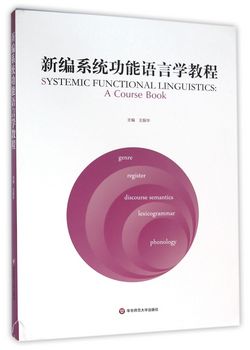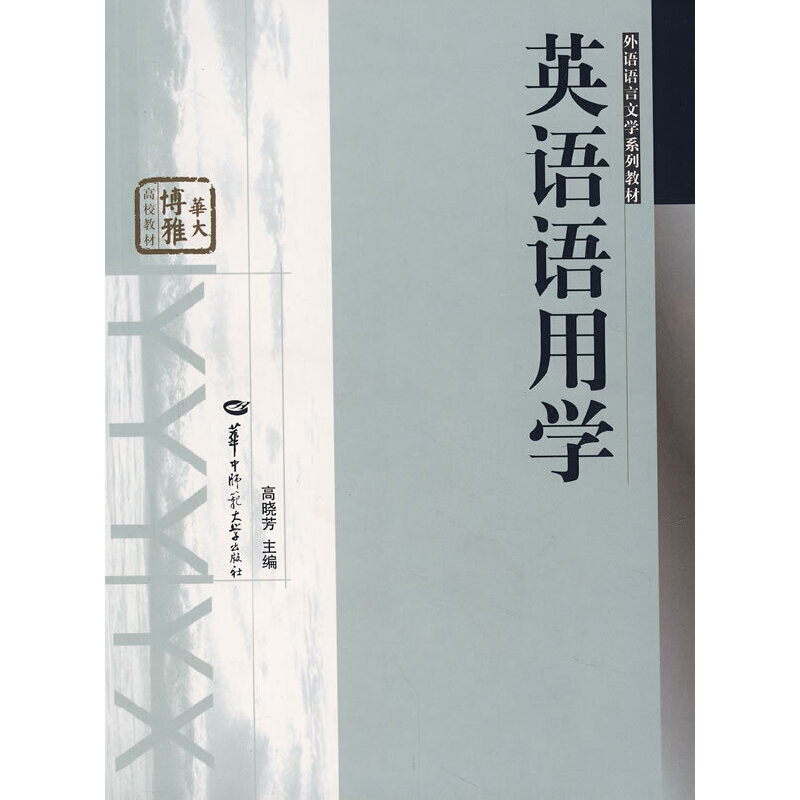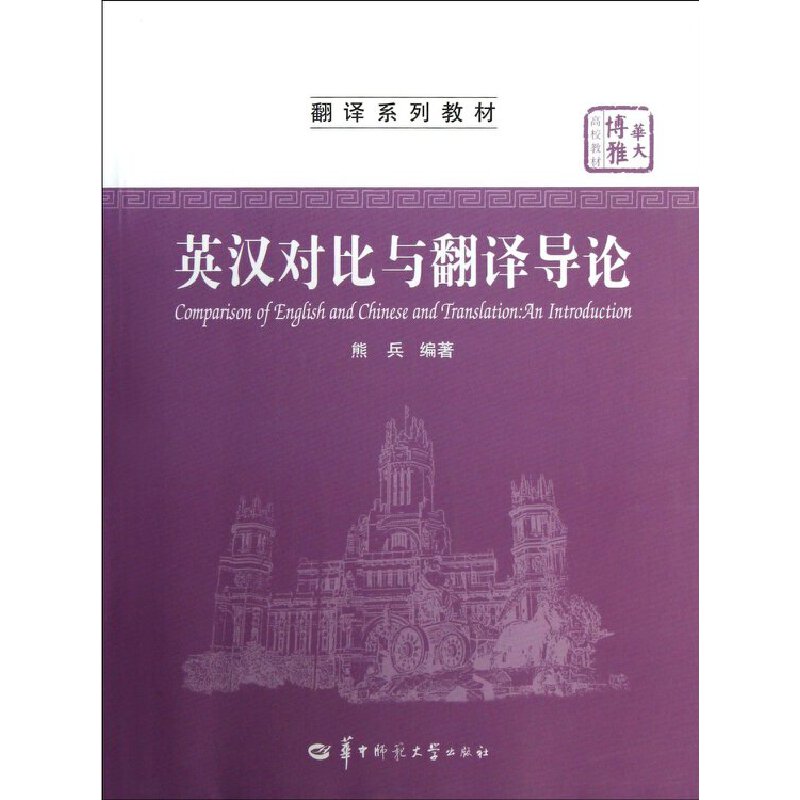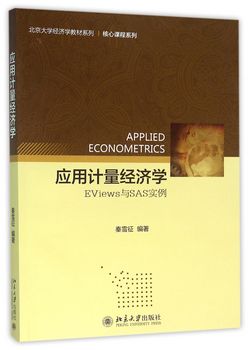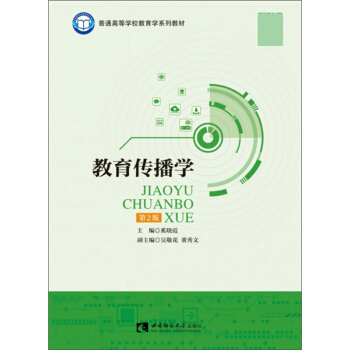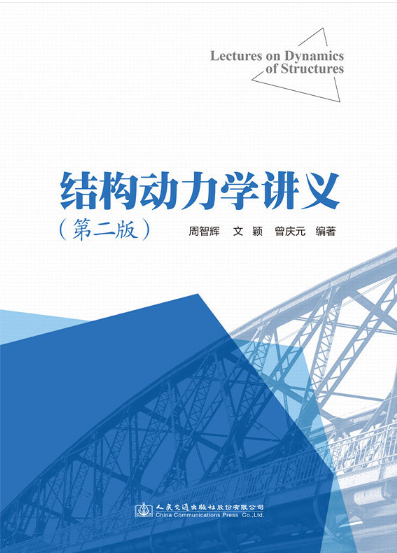新编系统功能语言学教程
定价:¥38.00
作者: 王振华
出版时间:2015-10
出版社:华东师范大学出版社
- 华东师范大学出版社
- 9787567529861
- 30484
- 50210909-3
- 2015-10
- H0
- 英语
作者简介
内容简介
《新编系统功能语言学教程》主要介绍系统功能语言学近60年来研究的重大理论,包括经典语法理论和语篇语义理论,在介绍过程中对所介绍的内容进行评价和应用,对个别问题提出一些看法供学生讨论。该教材除了对系统功能语言学的相关理论和方法进行简要的介绍外,也不乏评论和观点。该教材使用真实而幽默的语料讲述抽象的术语和概念,语言轻松活泼,能以令人愉悦的方式消除学生的畏难情绪,以循序渐进的方式逐渐提供学生的理论水平。
目录
Chapter 1 Introducing Clause
1.1 Introduction
1.2 Clause, Major Clause, and Minor Clause
1.2.1 What is a clause?
1.2.2 What is a proposition clause and what is a proposal clause?
1.2.3 Why is the rank of clause the central unit in lexicogrammar?
1.2.4 What is a major clause and what is a minor clause?
Chapter 2 Speech Role, Speech Function and MOOD Systems
2.1 What Does "Exchange" Mean?
2.1.1 How to understand that exchange is interpersonal?
2.2 What Is Speech Role?
2.3 What Is Speech Function?
2.4 MOOD Systems, Mood Types, Interpersonal Elements
2.4.1 Systems of MOOD and Mood types
2.4.2 How is each of the Mood types structured?
Chapter 3 How Are Interpersonal Meaninqs Conveyed in FG
3.1 Interpersonal Meaning
3.2 How Do Mood Types Convey Interpersonal Meanings?
3.2.1 Declarative Mood
3.2.2 Interrogative Mood
3.2.3 Imperative Mood
3.2.4 Exclamatives
3.3 How Do Polarity and Modality Convey Interpersonal Meanings?
3.3.1 Interpersonal metaphor and interpersonal meaning
3.4 Interpersonal Metafunction: Analysis
Chapter 4 Ideational Metafunction
4.1 Introduction
4.2 Types of Process
4.2.1 Material process
4.2.2 Mental process
4.2.3 Verbal process
4.2.4 Relational process
4.2.5 Existential process
4.2.6 Behavioural process
4.2.7 Circumstantial elements
4.3 System of ERGATIVlTY
4.4 Logical Metafunction
4.5 Summary
Chapter 5 Textual Metafunction
5.1 Introduction
5.2 Defining THEME
5.3 Classifying THEME
5.3.1 Simple Theme
5.3.2 Multiple Theme
5.3.3 Conflated Theme
5.4 Analysing Theme
5.4.1 Thematic progression
5.4.2 Interpersonal Theme in discourse development
5.5 Summary
Chapter 6 Clause Complex
6.1 Introduction
6.2 Identifying Clauses and Clause Complexes
6.3 Systems of the Clause Complex
6.3.1 The taxis system
6.3.2 The Iogico-semantic system
6.4 Analysing Real-Life Linguistic Data
6.5 Summary
Chapter 7 Phrase,Group,Group Complex
7.1 Introduction
7.2 Identifying Complexes at the Group or Phrase Rank
7.3 Parataxis: Group and Phrase Complexes
7.3.1 Elaboration: apposition
7.3.2 Extending: co-ordination
7.3.3 Enhancing
7.4 Hypotaxis: Group and Phrase Complexes
7.4.1 Hypotactic nominal groups
7.4.2 Hypotactic adverbial groups or prepositional phrases
7.4.3 Hypotactic verbal groups
7.5 Summary
Chapter 8 Cohesion and Coherence
Chapter 9 Periodicity
Chapter 10 Ideation
Chapter 11 Appraisal
Chapter 12 Fleqister
Chapter 13 Genre: The Sydney School
References
1.1 Introduction
1.2 Clause, Major Clause, and Minor Clause
1.2.1 What is a clause?
1.2.2 What is a proposition clause and what is a proposal clause?
1.2.3 Why is the rank of clause the central unit in lexicogrammar?
1.2.4 What is a major clause and what is a minor clause?
Chapter 2 Speech Role, Speech Function and MOOD Systems
2.1 What Does "Exchange" Mean?
2.1.1 How to understand that exchange is interpersonal?
2.2 What Is Speech Role?
2.3 What Is Speech Function?
2.4 MOOD Systems, Mood Types, Interpersonal Elements
2.4.1 Systems of MOOD and Mood types
2.4.2 How is each of the Mood types structured?
Chapter 3 How Are Interpersonal Meaninqs Conveyed in FG
3.1 Interpersonal Meaning
3.2 How Do Mood Types Convey Interpersonal Meanings?
3.2.1 Declarative Mood
3.2.2 Interrogative Mood
3.2.3 Imperative Mood
3.2.4 Exclamatives
3.3 How Do Polarity and Modality Convey Interpersonal Meanings?
3.3.1 Interpersonal metaphor and interpersonal meaning
3.4 Interpersonal Metafunction: Analysis
Chapter 4 Ideational Metafunction
4.1 Introduction
4.2 Types of Process
4.2.1 Material process
4.2.2 Mental process
4.2.3 Verbal process
4.2.4 Relational process
4.2.5 Existential process
4.2.6 Behavioural process
4.2.7 Circumstantial elements
4.3 System of ERGATIVlTY
4.4 Logical Metafunction
4.5 Summary
Chapter 5 Textual Metafunction
5.1 Introduction
5.2 Defining THEME
5.3 Classifying THEME
5.3.1 Simple Theme
5.3.2 Multiple Theme
5.3.3 Conflated Theme
5.4 Analysing Theme
5.4.1 Thematic progression
5.4.2 Interpersonal Theme in discourse development
5.5 Summary
Chapter 6 Clause Complex
6.1 Introduction
6.2 Identifying Clauses and Clause Complexes
6.3 Systems of the Clause Complex
6.3.1 The taxis system
6.3.2 The Iogico-semantic system
6.4 Analysing Real-Life Linguistic Data
6.5 Summary
Chapter 7 Phrase,Group,Group Complex
7.1 Introduction
7.2 Identifying Complexes at the Group or Phrase Rank
7.3 Parataxis: Group and Phrase Complexes
7.3.1 Elaboration: apposition
7.3.2 Extending: co-ordination
7.3.3 Enhancing
7.4 Hypotaxis: Group and Phrase Complexes
7.4.1 Hypotactic nominal groups
7.4.2 Hypotactic adverbial groups or prepositional phrases
7.4.3 Hypotactic verbal groups
7.5 Summary
Chapter 8 Cohesion and Coherence
Chapter 9 Periodicity
Chapter 10 Ideation
Chapter 11 Appraisal
Chapter 12 Fleqister
Chapter 13 Genre: The Sydney School
References

